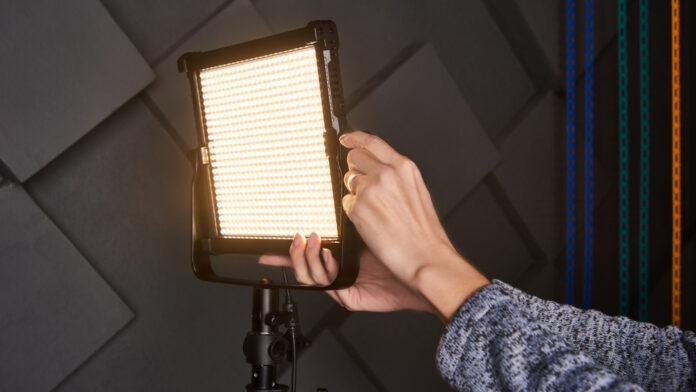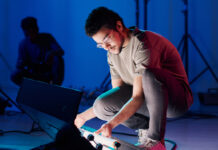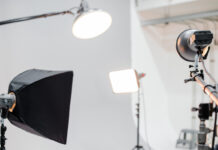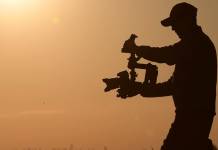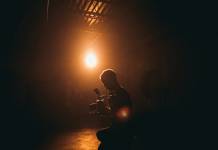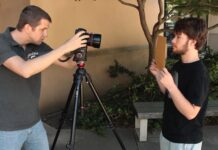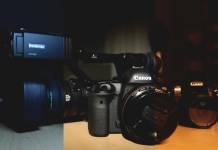In a nutshell
- Considering the impact of lighting, the creation of depth and the strategic application of LED lights is essential when planning your film’s visuals.
- Recognizing the narrative needs and target feel of your movie is the primary step in choosing the right LED lighting techniques for your film production.
- Experimenting with LED lighting in context, contemplating the emotional ambiance they establish, and drawing inspiration from existing films are effective tactics for making informed lighting choices.
There are three main factors that contribute to the making of a good film: sound, focus and lighting. With these three factors, you can easily tell your story and set the tone of your film without having to do much else in your post-production process. The key focus of this article will be the lighting aspect of filmmaking. We’ll show you that you can easily enhance your production with some quick, easy and cost-effective uses of LED lighting.
Depth and visual interest
Lighting in film isn’t just used to brighten up a scene to make sure everything is visible. It’s also used to emphasize certain subjects of interest and to help further the story for the audience. One very subtle and often unnoticeable way that a story can be told through lighting is through shadows. Casting shadows is a long-running cinematography practice. It’s a preferred choice for many filmmakers and directors, often seen in horror films.
Silhouettes
Some of the very first examples of shadows being used to portray horror come from the early days of film. See the 1922 F. W. Murnau film, “Nosferatu” (1922). This film utilized shadows in a way that has become a common way for modern horror films to bring fear to audiences. The iconic and easily recognizable shot shows the slow-moving shadow of the vampiric monster approaching his victim. By using clever lighting angles to distort the shadows of the vampire, the director was able to play with audience’s imaginations. The effect leads them to experience a greater sense of fear than they would if they had just seen the beast immediately. He uses the fear of the unknown along with clever suggestions to bring horror to the scene.
With how portable and compact LED lights are now, you can easily use them in your film project to reveal a character through shadows alone. This goes beyond horror films; it can be used to create suspense in a mystery or a thriller film.
Harsher shadows
Let’s say you want to show someone sneaking up on your protagonist. However, you don’t want to reveal who they are just yet. You can use some larger LED panel lights separately from your main lights to create this effect. By positioning your LED lights closer to your mysterious character, you can cast a much harsher shadow. This will emphasize them as being the threat to your protagonist. If you wanted to build up tension in your scene and slowly make your audience aware of the mysterious threat, you could start off having your LED lights further away and slowly bring them closer to your actor. This way, you create a slow reveal effect practically in-camera.
Noir effects
Another classic trope is the effect of window frames or blinds: the window blind look. It’s most commonly seen in old Noir detective films. This is a great way to set a layout of the room your scene is taking place in without having to show it all directly or figure out how to set up big can lights on the outside of your window.
The easiest and most effective way to achieve this is with a type of flat panel-styled LED light and a cut-out shape that simulates blinds — if you don’t happen to have any actual ones. Once you have your cut-out and the light set, turn it on and adjust the cut-out to a distance from your light that creates the shadow you’re looking for. It really is as simple as that. With just two steps, you have great blinds or window shadows to help set your scene better.
Natural light in unnatural ways
Oftentimes, filmmakers — especially those on the lower end of the budget scale — will want to incorporate natural lighting into their scenes. One very well-desired lighting effect is moonlight, as seen widely throughout Steven Spielberg’s films. Using simulated moonlight is a great way to set a nighttime scene while still allowing your subjects to be lit relatively well. The great thing about this technique is that it is very easy to achieve. Just like the above-mentioned noir blinds look, you can achieve the moonlight artificially. Just use an LED light with some blue light gels or filters on it, lighting an otherwise dark room.
By controlling the brightness of your light and the intensity of the blue filter, you can reach the desired look. Subtle blue light in a scene will translate to most audiences as a true night shot. However, it can also be used to apply a more Sci-Fi feel to your scenes. This is most popular with UFO or alien spacecraft shots. By having a moving blue light go across the set or your actor’s faces, you can make it seem as if your character is encountering beings from another world. And all without having to directly show a spaceship, saving yourself a lot of money on VFX shots.
Enhance the light you already have
Sometimes, a scene might include a lot of lighting on a set that isn’t direct lighting setups.
A bright TV screen
For example, you might have a TV on in a scene. However, the light coming from the TV may not be strong enough to illuminate the room. This is where LED light can come into play. By using a small LED light in the right position, you can make your TV screen look a lot brighter than it is without ruining the idea that the room is being lit by just that screen.
Enhanced practicals
Another brilliant use of LED lights for setting a scene is similar to the TV screen. It’s to enhance lights that already exist in your location. Let’s say you are filming a scene in a small office space. The light available isn’t as strong as you would like. Place some overhead LED lights above the area you are filming in. Then, use a color filter to match the temperature of the pre-existing lights. That way, you can have more light in your scene without giving it away to your audience that you added light to the scene.
However, adding an LED light to your shoot sometimes may not be enough to make the scene fit. You’ll also need to make sure that it matches the environment. You will need to balance the intensity and color of your lights. Make sure that they don’t end up being brighter than the lights around them and overexposing your shot.
Another factor to keep in mind is how the color fits in. If you are filming in an environment with soft tungsten-colored lights, then you will need to make sure that your lights are aligned with the existing color temperature. Otherwise, it will stand out to viewers, and they will know that you have used additional lighting. A quick and easy way to match up the color of your additional lighting on the fly is to have someone set it up and stand near it with the various color filters. While they do this, look through the camera and ask them to adjust the filters. Once it all looks the same, then you can safely proceed to film your scene.
LEDs for visual effects
For visual effects artists, lighting is everything. If you’re compositing an effect onto a shot or adding in a CG character, you’ll need lighting references. Lighting is what allows the effect or character to realistically fit into the scene. In many cases, some effects that have to be added to a shot will emit their own light.
Fire effects
For example, flames and fires will have to give off their own glow that interacts with the surrounding environment. One thing that is often neglected due to time or budget restraints is the practical implementation of lights for fires. Simply putting down an LED light strip or bar and programming it to flicker at the right light color will simulate the effects of a fire and interact with the scene much better than what an artist can recreate. It also allows you to have your actors safely carry out the scene if they are directly meant to be next to the fire. This also avoids having a VFX artist try to digitally match the lighting.
Lens flare
Another very popular film style — especially if you are J.J. Abrams — is the lens flare. This is something that can be added digitally, but audiences can always feel it’s digital. So it’s best to try and achieve this in camera. By using a brighter LED light at the correct temperature for the lens on your camera, you can create your own lens flares to fit your scene. This technique is also great if your camera might not actually capture a lens flare from the available light.
Say you have a scene that takes place moving back slowly through a house at sunrise. Your camera positioning is a little further back to where the sun is shining through the windows. By adjusting a small wireless LED light to be bright enough to generate a lens flare, you can move back while someone brings that light slowly across to simulate the lens flare from the sun hitting the camera. You can do this all without having to adjust your positioning to try and capture it naturally.
As with everything, you must put some thought into how you use LED lights in your scenes. Make sure that the brightness and color of your additional light will fit and complement the scene you are shooting. Always keep in mind to check the color temperature and brightness of your location, and bring the correct type of lights and color filters to improve your scene.
Get creative with LED lighting as film props
LEDs have been used as props in many films throughout the years, many in ways you wouldn’t have guessed. One practical prop idea that we have noticed a lot is the futuristic screen that uses an LED plexiglass light to simulate a holographic device. It’s a very simple prop idea. However, when used in a clever way, it can really help sell the idea behind the prop. A great option for this kind of prop — especially if you are on a budget — is a small LED book reading lamp board. It’s a versatile and very efficient prop to use. This battery-powered reading tool emits a bright LED light into a flat plexiglass panel and gives off a great futuristic tablet or screen look.
To enhance this look, tracin some HUD or graphical elements to solidify the effect more. Similarly to this kind of prop, many Sci-Fi filmmakers often like to employ the classic hologram effect. One we’ve all seen in many different films and TV shows. Now, you could carry out this effect digitally with some clever compositing. But if you were to use an LED panel of some kind, you could position it in a way where it gives off a large beam of light in the place where your hologram’ will be. This again brings us to the notion of interactive light and how a practical light prop can help sell the much greater effect by showing how it affects the environment around it.
Use LED lighting for your film in unique ways
Although these are unconventional uses of LED lights, they are exceptional at creating effective and compelling visual effects. Now it’s time to practice them yourself. Just remember the key steps to using your lights correctly: Get the right intensity levels, get the right color temperature and use only the amount of lights you need to keep your audience engaged with the main story.
Get out there and start making your awesome projects come to life.

